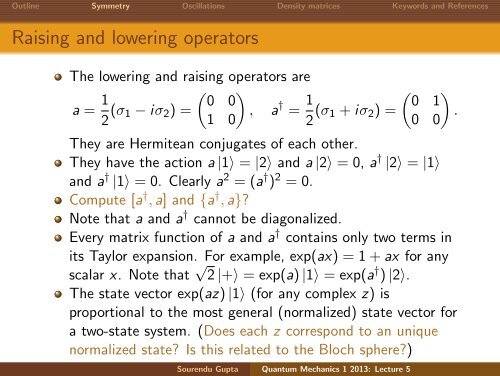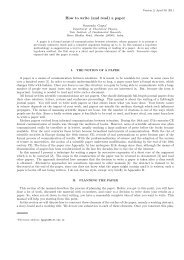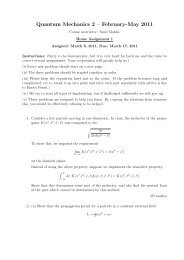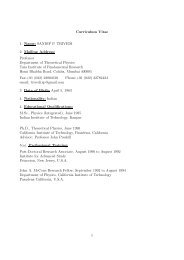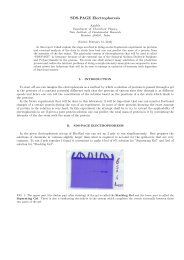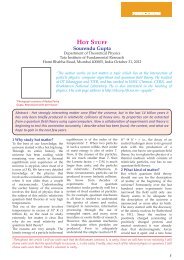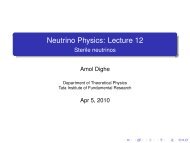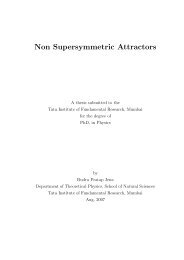The physics of 2-state systems
The physics of 2-state systems
The physics of 2-state systems
Create successful ePaper yourself
Turn your PDF publications into a flip-book with our unique Google optimized e-Paper software.
Outline Symmetry Oscillations Density matrices Keywords and ReferencesRaising and lowering operators<strong>The</strong> lowering and raising operators area = 1 ( ) 0 02 (σ 1 −iσ 2 ) = , a † = 1 1 0 2 (σ 1 +iσ 2 ) =( ) 0 1.0 0<strong>The</strong>y are Hermitean conjugates <strong>of</strong> each other.<strong>The</strong>y have the action a|1〉 = |2〉 and a|2〉 = 0, a † |2〉 = |1〉and a † |1〉 = 0. Clearly a 2 = (a † ) 2 = 0.Compute [a † ,a] and {a † ,a}?Note that a and a † cannot be diagonalized.Every matrix function <strong>of</strong> a and a † contains only two terms inits Taylor expansion. For example, exp(ax) = 1+ax for anyscalar x. Note that √ 2|+〉 = exp(a)|1〉 = exp(a † )|2〉.<strong>The</strong> <strong>state</strong> vector exp(az)|1〉 (for any complex z) isproportional to the most general (normalized) <strong>state</strong> vector fora two-<strong>state</strong> system. (Does each z correspond to an uniquenormalized <strong>state</strong>? Is this related to the Bloch sphere?)Sourendu Gupta Quantum Mechanics 1 2013: Lecture 5


